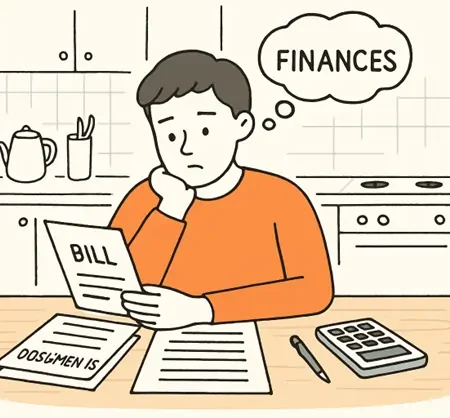Introduction
Life has a way of catching us off guard with unexpected expenses—be it a sudden medical bill, car trouble, or urgent home repairs. In challenging moments like these, borrowing money may seem like the most viable option. While seeking quick financial relief, navigating borrowing responsibly is essential to avoid unnecessary economic hardship. Before deciding where and how to borrow, consider reviewing third-party insights and customer experiences in resources such as MaxLend Reviews to help inform your decision with honest user feedback.
Being proactive and prepared can make all the difference in weathering unexpected financial storms. By making informed borrowing decisions, you can maintain stability and better position yourself to bounce back from surprise expenses.
Assess Your Financial Situation
The first crucial step before borrowing is taking a careful inventory of your finances. Create a clear snapshot of your monthly income sources, necessary expenses, available savings, and any outstanding debt obligations. This exercise not only helps you determine whether borrowing is necessary but also reveals how much extra debt you could realistically handle without putting your broader financial health at risk.
Reviewing your budget might also reveal ways to reduce or defer discretionary spending, freeing up cash flow and perhaps reducing the amount you’ll need to borrow in the first place. Remember, the less you need to borrow today, the less you pay in interest tomorrow.
Explore Borrowing Options
The right borrowing method can make a significant difference in your overall financial outcome. Evaluate these commonly-used approaches:
- Personal Loans are good for those with solid credit. They offer fixed payments and predictable terms. Rates and accessibility can vary widely by lender.
- Credit Cards are useful for small, short-term cash needs, especially if you can take advantage of 0% introductory APR offers. However, be wary of high standard interest rates and the potential for debt buildup.
- Home Equity Loans or Lines of Credit (HELOCs): If you’re a homeowner with available equity, these can provide lower interest rates. Be cautious, as your home is used as collateral.
- Borrowing from Family or Friends: An informal option that can prevent paying interest. If you go this route, communicate clearly and agree on written repayment terms to avoid misunderstandings.
To discover innovative borrowing options for handling unexpected expenses, consider reviewing Experian’s expert guide, which breaks down the advantages and drawbacks of each method. If you’re exploring short-term solutions like a MaxLend loan, you can conveniently apply online to get started quickly and securely.
Understand Terms and Conditions
Carefully examining the terms of your loan agreement will help you avoid unpleasant surprises down the line. Watch for these critical details:
- Interest Rates: Find out if the interest rate is fixed or variable, as this impacts your monthly payment amount and total repayment cost.
- Fees: Origination fees, prepayment penalties, and late fees can all significantly affect what you actually pay. Always ask for a clear fee schedule before you sign.
- Repayment Schedule: Know the loan’s length, payment frequency, and start date. Be certain that the terms are manageable for your monthly budget.
By fully understanding these conditions, you can avoid hidden costs and plan confidently for repayment.
Develop a Realistic Repayment Plan
Creating a sustainable plan to repay what you borrow is key to preventing debt from spiraling out of control. Here’s how to structure your approach:
- Set a Monthly Budget: Identify exactly how much you can set aside for repayments without sacrificing essential expenses.
- Prioritize Loan Payments: Make your loan payment a non-negotiable part of your budget to avoid penalties and protect your credit score.
- Automate Payments: Enroll in automatic payments to ensure you never miss a deadline, reducing stress and the risk of accidental late fees.
For more actionable advice, check out Breaking AC’s tips on managing debt to strengthen your repayment strategies and long-term financial health.
Build an Emergency Fund
The true antidote to many financial surprises is preparation. Even modest regular contributions to an emergency fund can, over time, create a significant safety net. Financial experts suggest aiming for three to six months’ worth of living expenses in readily accessible savings. If that feels out of reach, start with small, consistent deposits—every dollar adds up and reduces your reliance on borrowing in the future.
As you pay down existing borrowed amounts, consider redirecting the funds you previously used for debt payments into your emergency savings to increase your funds faster.
When unplanned expenses strike, borrowing can provide an essential lifeline—but only if used wisely, by assessing your financial position, selecting the right borrowing method, carefully reviewing loan terms, developing a solid repayment plan, and building toward an emergency fund, you can confidently manage life’s surprises and strengthen your financial resilience.
Read more: How to Upgrade Existing Locks Using Master Lock Cylinders – The Funny Puns
Why Women Are Choosing One Piece Yoga Bodysuits and Dresses Over Traditional Activewear
How to Choose the Right Wood Species for Your Home’s Personality


Comments